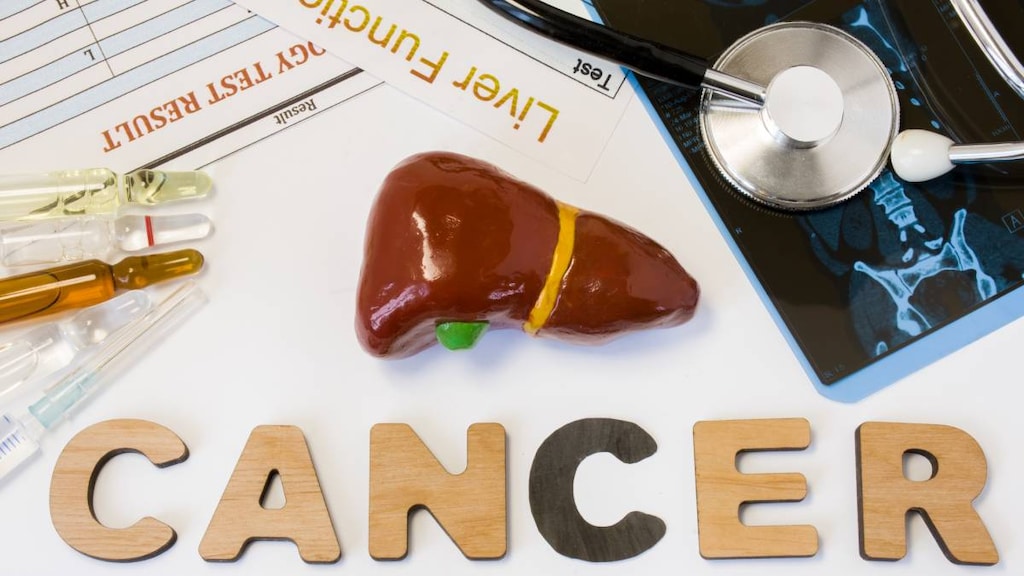Liver Cancer: Stages 1 Through 4 Explained

Liver cancer is rare, but it is alarming when it does occur, due to the high risk of death among people who are diagnosed.
The American Cancer Society estimates that more than 42,000 people will develop liver cancer in 2020, and more than 30,000 people will die of the disease. Liver cancer is much more common in other areas of the world than it is in the United States. Around the world, it is a leading cause of cancer death, causing more than 700,000 deaths each year.
The liver — which is the second largest organ in the body — happens to be vital for a number of basic functions. It’s critical for filtering harmful substances from your blood, as well as processing nutrients your body needs from food and drink. It gives you energy and produces bile that helps your body digest what you eat.
Liver cancer: what you need to know
The most common form of liver cancer, according to the Mayo Clinic, is known as hepatocellular carcinoma. It’s also more common for cancer to begin in other parts of the body and spread to the liver than for the cancer to start in the liver.
Liver cancer is classified in stages 1 through 4, which are used to rank the severity and extent of the cancer. Stages 1, 3 and 4 each have an A and B sub-stage, where the B stage is slightly more severe than the A stage. Stage 1A, for example, identifies a smaller tumor that is present only in the liver. Stage 4B liver cancer may have spread to various parts of the body and be more difficult to treat, the American Cancer Society says.
To determine which stage of liver cancer is present, doctors often use a system known as TNM, which stands for tumors, nodes and metastasis. Essentially, examining the size of the tumor (T), determining if the tumor has spread to nearby lymph nodes (N) and checking if the cancer has metastasized (M), or spread to distant lymph nodes or organs in the body, helps doctors classify the stage of the cancer. Each T, N and M variable is given a number ranking based on its severity, and the sum of these numbers helps determine the cancer stage.
To diagnose a liver cancer’s stage, your health care team will rely on the results of physical examinations, imaging tests, blood tests, biopsies and, in some cases, surgeries to determine these three factors.
Stage 1 liver cancer
Stage 1 liver cancer has an A and a B sub-stage, which are mainly distinguished by the size of the cancer tumor. This is the earliest identifiable stage of liver cancer.
- Diagnosis: Stage 1A liver cancer is indicated by a tumor that is 2 centimeters (about a half-inch) or smaller, and stage 1B has a tumor size of larger than 2 centimeters. With both stages, the tumor has not grown into the blood vessels, and the cancer has not spread to lymph nodes or other organs.
- Treatment Options: If the tumor is small and contained within the liver, surgery to remove the tumor is a potential treatment. Other possible early stage treatments include liver transplant, radiofrequency ablation, cryoablation, chemotherapy and radiation.
- Prognosis: For people with “localized” liver cancer, which includes stage 1, stage 2 and some stage 3 cancers, the five-year survival rate is 31 percent. For those who have a successful liver transplant, that rate improves to between 60 and 70 percent, the American Cancer Society says.
Stage 2 liver cancer
When liver cancer advances to stage 2, it means that the tumors have increased in size, number or reach. The cancer still has not spread to other areas of the body beyond the liver.
- Diagnosis: Two distinct changes to liver cancer tumors can lead to a diagnosis of stage 2 liver cancer. One is if a tumor that is larger than 2 centimeters has grown into the liver’s blood vessels. The other qualifying factor is if more than one tumor is present in the liver, and they are all smaller than 5 centimeters.
- Treatment Options: Surgery to remove the tumor, a liver transplant, cryoablation, radiofrequency ablation and radiation therapy are all possible treatments for stage 2 liver cancer.
- Prognosis: The five-year survival rate is 31 percent for people with localized liver cancer as described above. With a successful liver transplant, that rate improves to between 60 and 70 percent.
Stage 3 liver cancer
Like stage 1 liver cancer, stage 3 breaks down into 3A and 3B sub-types. Both have to do with the size and severity of the tumor. Neither stage indicates that the cancer has spread beyond the liver.
- Diagnosis: For stage 3A liver cancer to be present, more than one tumor must be present in the liver, and one of the tumors must be larger than 5 centimeters across. A diagnosis of stage 3B cancer, according to the American Cancer Society, requires the presence of at least one tumor that has grown into one of the two large veins of the liver, the hepatic or portal vein.
- Treatment Options: Treatment options for advanced stages of liver cancer include chemotherapy, radiation therapy, targeted drug therapy and immunotherapy, among other options, the Mayo Clinic says. Supportive, or palliative, care is focused on helping patients with symptoms they experience that are related to their severe illness, as well as helping them cope with the cancer treatments themselves.
- Prognosis: According to the American Cancer Society, some stage 3 cancers fall into the “localized” category and have a five-year survival rate of 31 percent. Those that fall into the “regional” category have a five-year survival rate of 11 percent.
Stage 4 liver cancer
With stage 4 liver cancer, the cancer has begun to spread beyond the liver itself. It breaks down into 4A and 4B sub-types.
- Diagnosis: A stage 4A liver cancer diagnosis indicates that the cancer has spread to lymph nodes around the liver. With stage 4B, the cancer has spread to organs well beyond the liver, like the lungs or bones, among other possibilities.
- Treatment Options: According to the Mayo Clinic, treatment options for advanced stages of liver cancer include chemotherapy, radiation therapy, targeted drug therapy and immunotherapy. Palliative care is also an option.
- Prognosis: The prognosis for stage 4 liver cancer is poor. For those with stage 4A, the survival rate after five years is 11 percent. With stage 4B, the survival rate after five years is about 2 percent.
The final word
There’s no question that a diagnosis of liver cancer can be a challenging and frightening one. Although the disease is relatively rare in the United States, that’s not much comfort if you or a loved one receives the news that liver cancer is present.
However, there is hope through treatment and support. The American Cancer Society notes that survival rates are as high as 70 percent with a liver transplant, and other treatments for liver cancer are improving all the time. For example, cutting edge treatments such as targeted therapy and immunotherapy didn’t even exist until relatively recently, and now they are viable cancer treatment methods. It’s quite possible that liver cancer survival rate numbers will improve as research continues and methods of treating cancer continue to be refined.
Article references
- Your Liver, American Liver Foundation, 2019, https://liverfoundation.org/for-patients/about-the-liver/
- Key Statistics about Liver Cancer, American Cancer Society, 2019, https://www.cancer.org/cancer/liver-cancer/about/what-is-key-statistics.html
- Liver Cancer, Mayo Clinic, 2019, https://www.mayoclinic.org/diseases-conditions/liver-cancer/diagnosis-treatment/drc-20353664
- Liver Cancer Stages, American Cancer Society, 2019, https://www.cancer.org/cancer/liver-cancer/detection-diagnosis-staging/staging.html
- Liver Cancer Survival Rates, American Cancer Society, 2019, https://www.cancer.org/cancer/liver-cancer/detection-diagnosis-staging/survival-rates.html



